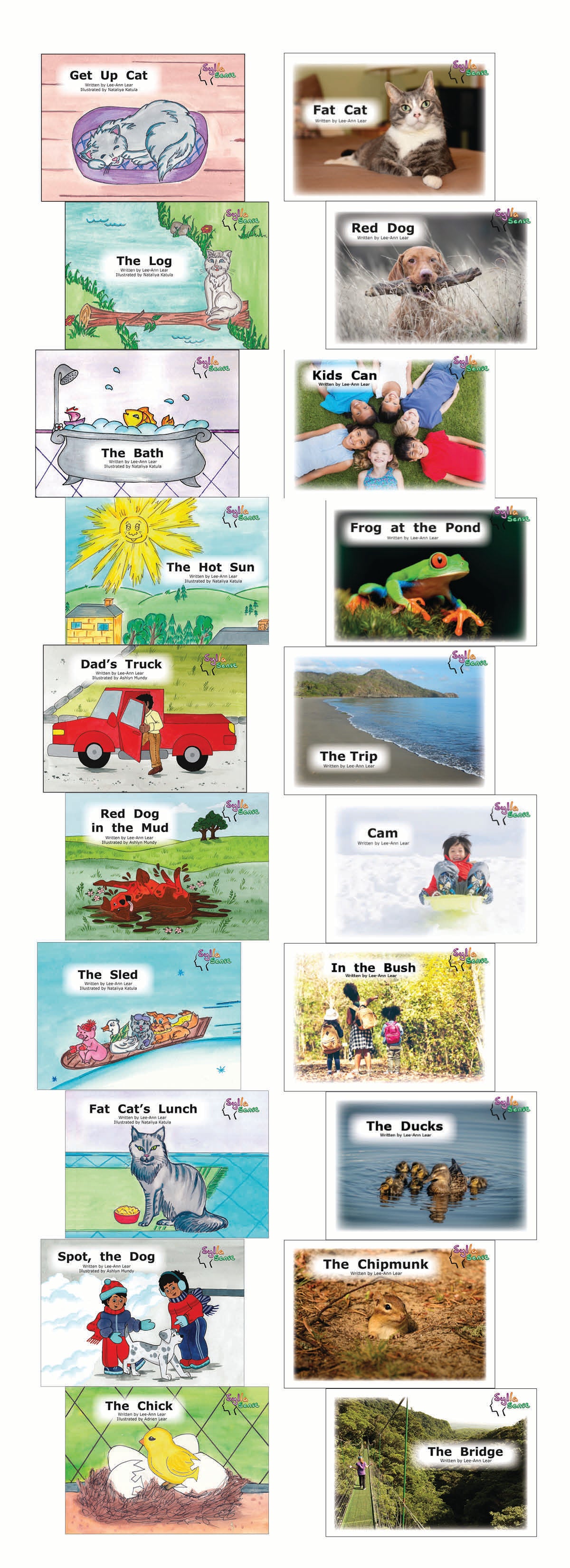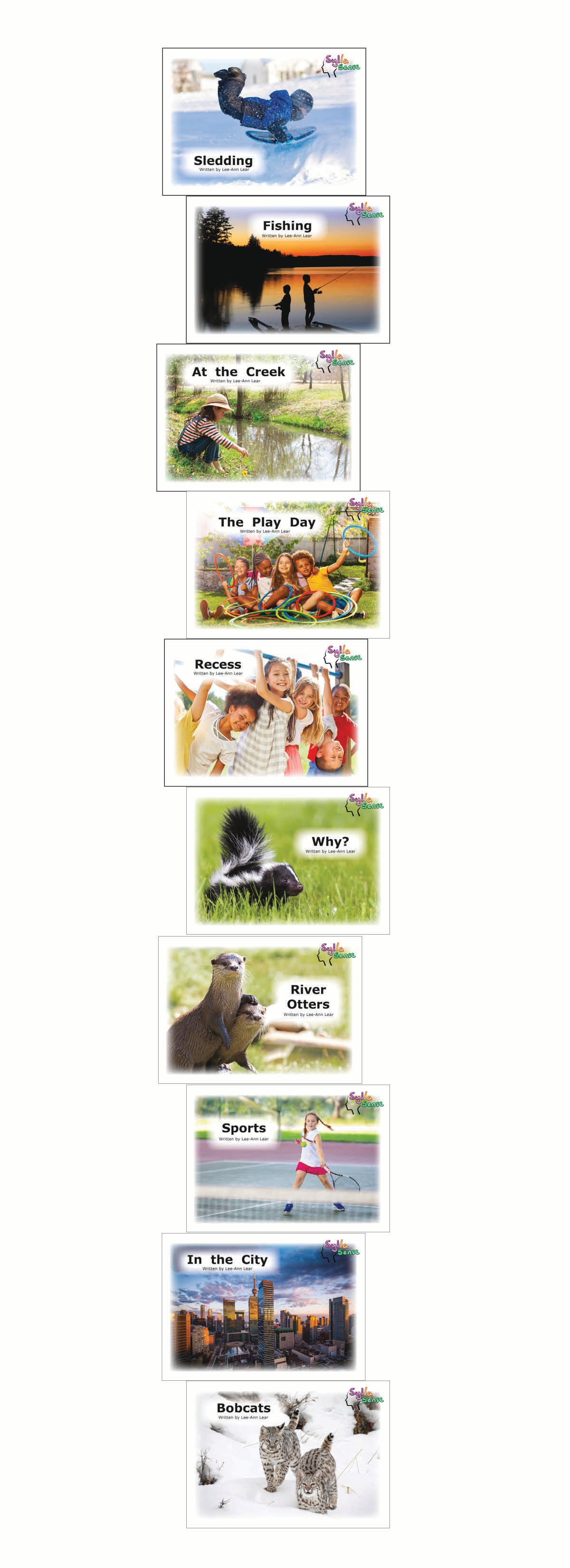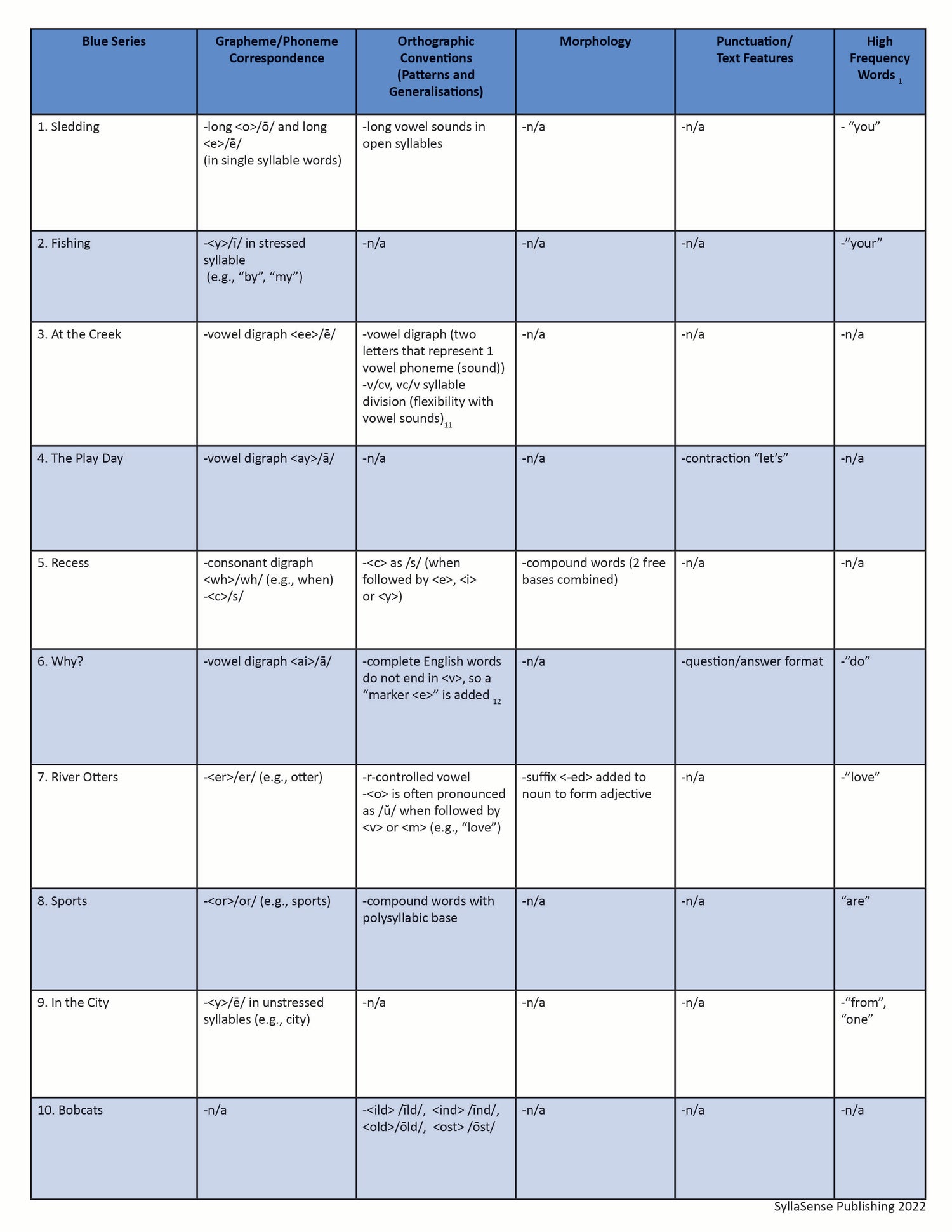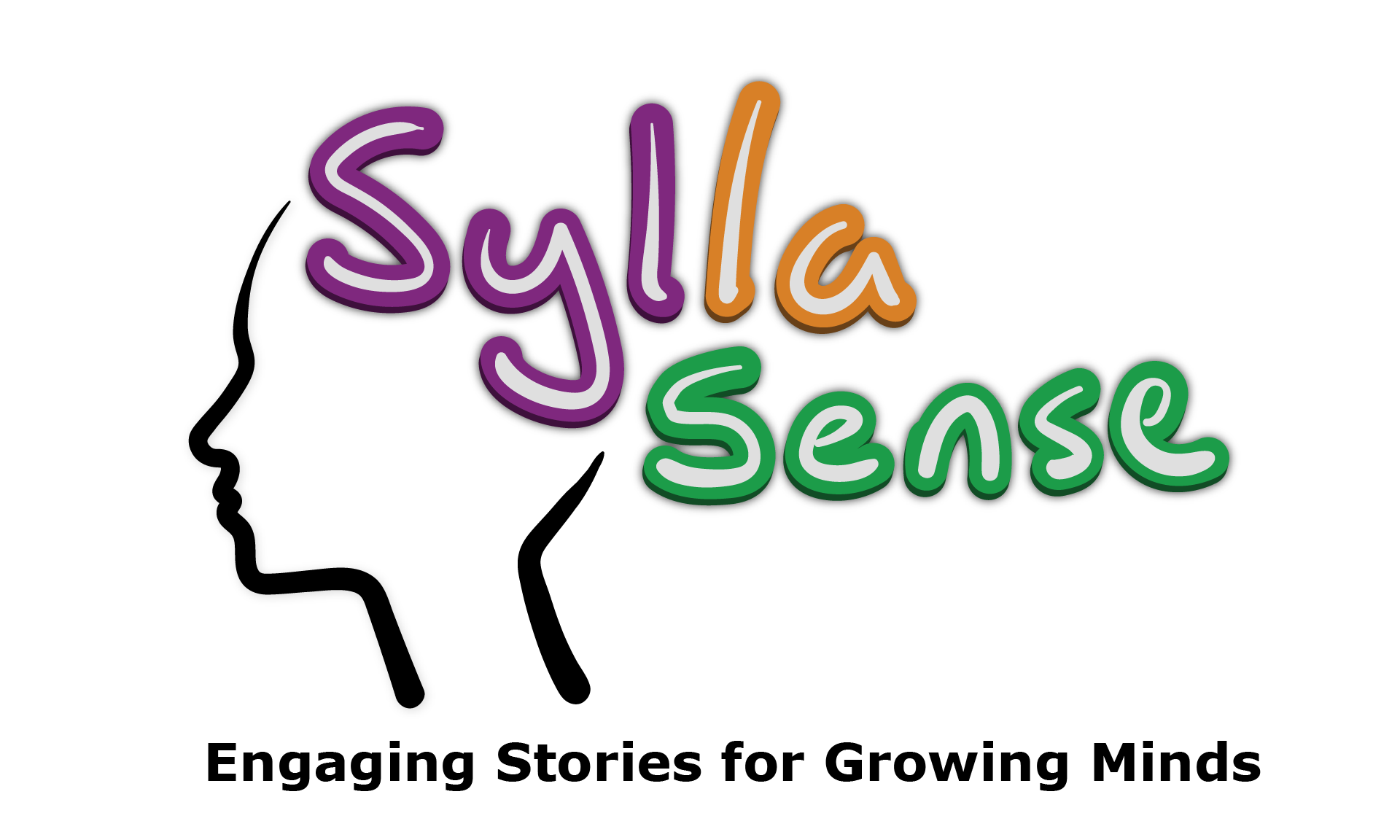Scope and Sequence Rationale
Over the past year, we have been gathering feedback about the series. Some key strengths of the series have been noted:
-
The natural language structures are a real strength of the series (e.g., saying “The hen rested in the nest” rather than “The hen did rest in the nest”)
-
The illustrations and stock photos are great and help to engage young readers
-
The books are true “stories” and allow for discussion, prediction, inference, etc, which is an important feature to keep in the series
-
Readers love the books and feel successful reading them - the focus on short vowels for the Green Series has helped many students take their first steps into decoding in a more successful way than with levelled readers
-
The inclusion of beginning prefixes and suffixes is a very important feature of the series, and provides opportunities for students to explore the morphological structure of our language
-
The books include Canadian content, which is important for Canadian students
Some key recommendations have also come up:
-
We need to include more diversity of characters and places in our photos and illustrations (note - the Green Series has already been updated with this in mind, but not the Purple)
-
Some of the Green Series books have too much repetition in phrasing (e.g., Pig is up. Hen is up. Dog is up) - this might reinforce students “guessing” the words rather than actually decoding them
-
There seems to be too big of a gap between the end of the Green Series and the beginning of the Purple - the Purple Series is quite challenging and has a lot of polysyllabic words that some students find challenging
-
The Scope and Sequence of the Green Series could use some tweaking - some of the consonant clusters included at the beginning of the Green Series (e.g., “still” in “Get up Cat”) are quite challenging - it might be easier for students to learn digraphs first, then introduce consonant clusters in a more systematic way, starting with clusters with continuous sounds (e.g., sl, fl), then moving to clusters with stop sounds (e.g., st, sp)
Some “wish lists” have also been provided:
-
It would be great to have a series before the Green Series that moves a bit slower (e.g., less text on the page, no consonant clusters or digraphs) - the Green Series is a challenging starting point for some readers
-
It would be great to have multiple books at each level (e.g., more than one Book 1 in the Green Series) for students who need consolidation of a concept before moving on
-
It would be great to have books that are linked to the general themes found in the Science and Social Studies Curriculum, for instance books on living and non-living things for Grade 1 students
A note on the Scope and Sequence
After much deliberation, we have moved away from using syllable types as the main structure of our series. Although syllable types are still very useful for students to learn, we’ve discovered that it doesn’t always make sense (in the context of decodable books) to cover all concepts within a syllable type before moving on to the next syllable type. For instance, some vowel teams such as <ee> are very regular and predictable and would make sense to include near the beginning of the series. Others, such as <ea>, have multiple sounds and would fit better later on in the series. Moving away from syllable types has allowed us to more effectively cluster concepts from “simple” to “complex”, and we feel it will improve the flow of the series.
We have taken all the above feedback into consideration, and are pleased to share our updates. Although we were not able to hit every item on the wish list immediately, here is our new structure:

Yellow Series
We have written 10 new books (5 Fiction, 5 Photo) that will fall before the current Green Series. The Yellow Series starts with short <a> and short <o> and a selection of consonants. By the end of the 10 books we have introduced:
• all short vowels and all consonants
• consonant digraph <ck>
• the High frequency Words “a”, “the”, and “to”
• the “FLOSS” or “BOMP” pattern (double the final <s>, <f>, <l> and <z> after a single short vowel, which also lends itself to a beginning exploration of orthography)
• Punctuation concepts found in many Concepts of Print Assessments (period, comma, questions mark and exclamation mark)
We have also included 2 forms of suffix <-s>:
•suffix <-s> as third person singular present tense is very common in “book language”, particularly in early decodable texts, so it is important for students to develop an understanding of this early in their book exploration
•suffix <-s> as a plural is a great introduction to how a suffix is a morpheme (meaning unit) - exploring these concepts early helps students begin to understand the concept of “base” plus “affix”, which is critically important for early readers

Green Series
The Green Series still focuses on short vowel sounds, as well as some simple suffixes and irregular words. We have tweaked the 20 books in the Green Series in the following ways:
• Consonant digraph <th> and <sh> are introduced earlier in the series, with <ch> following a bit later in the series. Due to students sometimes confusing <sh> and <ch>, we have deliberately separated their introduction by several books.
• Initial clusters that are continuous sounds (e.g., <l> and <r> clusters) are the first clusters introduced, followed by final clusters (e.g., mp, st), then initial clusters with stop sounds (e.g., st, sp), which are harder to blend
• <ng> and <nk> are introduced later in the series as the nasal <n> sometimes makes these sounds harder to pronounce and hear
• Book 1 of the Photo Series is now lined up with Book 4 of the Fiction Series - we received feedback that the Photo Books were a little bit trickier, so we adjusted their starting point
• We have adjusted various lines of text to remove some of the repetition found in the series and encourage students to really look at each line of text.
• We have tightened up our introduction to the “doubling rule” with a book that focuses on multiple examples of this concept
• suffix <-ing> is added before suffix <-ed>Pair text with an image to focus on your chosen product, collection, or blog post. Add details on availability, style, or even provide a review.

Blue Series
We have written 10 additional books which will fall before the current Purple Series. The Blue Series introduces:
• Compound words
• Long vowel sounds in open syllables (e.g., go, she)
• <y> as long i (.e.g, shy, cry) and <y> as long e (e.g., city)
• Soft c
• Vowel digraphs <ee>, <ay>, <ai>
• R-controlled vowels <er> and <or>
• “ild”, “ind”, “old” and “ost”
•“marker” concept: <e> following <v>

Purple Series
The Purple Series continues to introduce the Vowel-Consonant-e pattern. Although the majority of the story lines and text wording have stayed the same, we have made the following adjustments:
• Updated some images with more diversity of people and places
• Simplified language in current books (e.g., the removal of some of the more challenging polysyllabic words), and the addition of concepts now introduced in the Blue Series
• inclusion of a smaller number of inflectional and derivational suffixes in a more controlled sequence

Scope and Sequence
We have created 3 versions of our Scope and Sequence - all include the same content, but are in different printable formats. Please feel free to download whichever version best suits your needs.
Full Scope and Sequence - Printable plain table
Review Process
Once our updates were completed, we embarked on an extensive review process. We shared our Scope and Sequence, our book text in isolation, and our book text combined with illustrations/photos with a variety of professionals, including teachers, consultants, psychologists, and literacy experts with different areas of expertise (e.g., Orton Gillingham trained). As part of our review process, we asked these professionals to provide feedback on:
-the overall Scope (concepts that are included in the series) and Sequence (order of introduction of concepts) of the series
-the opportunity for practice of new concepts in each book
-how natural the language structures were throughout the series (e.g., natural, flowing language vs stilted, unnatural language)
-the opportunities for comprehension discussions (e.g., problems, solutions, inferencing, etc.) throughout the series
-the diversity of photos throughout the series and any instances of bias that might be present
-the potential for the series to be used with students in different grades, and students diagnosed with Learning Disabilities/Dyslexia/Language Impairments
-Once all feedback was received, we reviewed the series again and made adjustments as per recommendations. We are super excited to share the the updated series, which will be available late August/early September.
